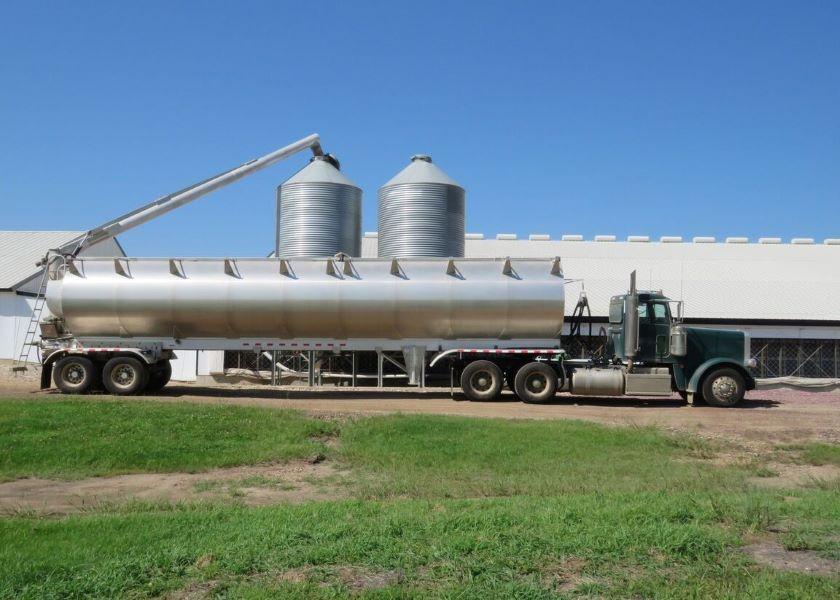A Proactive Step Forward in Pork Industry's Wean-to-Harvest Biosecurity Program

Proactively enhancing wean-to-harvest biosecurity will help control the next emerging disease in the U.S. pork industry and improve U.S. swine herd health. That's why SHIC, along with the Foundation for Food & Agriculture Research (FFAR) and Pork Checkoff, are funding a Wean-to-Harvest Biosecurity Program to be implemented over the next two years.
During Phase 1, the groups identified subject matter experts and assembled task forces with the responsibility of establishing research priorities. Now in Phase 2, SHIC, FFAR and Pork Checkoff are soliciting proposals to investigate cost-effective, innovative technologies, protocols, or ideas to implement biosecurity during the wean-to-harvest phase of production.
The SHIC Wean-to-Harvest Biosecurity Program Site Task Force and Transport Task Force experts from allied industry, academia, veterinary practice and organizations involved in pork production came together recently to develop and refine priorities for the research proposals.
“Task force members came together, working efficiently and effectively to identify priorities for wean-to-harvest biosecurity,” SHIC Associate Director Megan Niederwerder says. “SHIC appreciates the time and service of each task member to provide valuable insight on how to best fill this gap in pork production biosecurity.”
Research priorities focus on site and transportation biosecurity and cover three areas – bioexclusion for preventing disease introduction on the farm, biocontainment for preventing disease spread from the farm to reduce risk to neighboring facilities, and transportation biosecurity for preventing disease movement from markets and other first points of concentration back to the farm.
“We are seeking novel tools across all three areas for a comprehensive biosecurity approach,” explains SHIC Executive Director Paul Sundberg.
With a pool of approximately $2.3 million available for the research, proposals are capped at $200,000 but individual proposals may be higher with sufficient justification for a project that will be unique, high impact, and have industry-wide benefit. Click here for the proposal template and instructions for completion and submission. The deadline is 5:00 PM CDT, Dec. 16. Diverse research proposals are encouraged and invited for submission and consideration for funding through this program. Decisions on awards funded and project initiation is anticipated to occur in early 2023.
Site Biosecurity Research Priorities
The Site Task Force recommends an industry-wide assessment to define the current bioexclusion standards and protocols applied to prevent the predominant pathogen introduction routes in the wean-to-harvest phase. They envision the work including an estimate of degree of implementation nationally and regionally, to characterize the breadth and variation of currently implemented baseline practices.
"Characterizing the breadth and variation of current wean-to-harvest biosecurity protocols not only allows individual producers to compare their own farm to an industry standard, but also allows us to identify the areas in which interventions and modifications to the industry standard would provide the greatest opportunity to reduce disease risk," Niederwerder says.
The Site Task Force identified four priorities:
• Personnel biocontainment and bioexclusion - implementation and compliance incentives; personnel and equipment traceability; alternatives to shower-in/shower-out facilities and protocols; biocontainment or bioexclusion engineering controls; and innovative ways to ensure implementation of protocols and policies
• Facility biocontainment and bioexclusion – identification of biosecurity-effective and cost-effective options for retrofitting or renovating current production site designs; novel biosecurity-effective and cost-effective methods for preventing aerosolized pathogen introduction; decreasing aerosol pathogen dispersal; and feasibility of scheduling deliveries within networks relative to biosecurity status
• Site mortalities – investigation of innovative engineering or facility design solutions for preventing pathogen spread through mortality movements; and exploration of containment materials, technologies, and equipment to reduce contamination of the environment
• Equipment, environmental and supply biocontainment and bioexclusion – investigation of novel, less-labor and less-time intensive technologies and/or protocols for cleaning and disinfection of pens, barns and/or equipment; point-of-care diagnostic assays or other novel contamination sensing technologies; and sampling design for determining if pens, equipment, or supplies are contaminated or disinfected
Transportation Biosecurity Research Priorities
"Transportation connects the U.S. swine industry, from weaned to market pig transport and is a necessary tool for efficient pork production and business continuity," Niederwerder says. "However, we also know that these transport connections can serve as a source of disease introduction and spread. Discovering novel technologies to increase safety of the transport process will reduce endemic disease risk as well as enhance preparedness for foreign animal disease."
The Transportation Task Force identified four priorities.
• Biosecurity of truck driver – identification and mitigation of pathways for pathogen introduction or movement from driver activities; investigation and validation of innovative ways to cost-effectively clean and disinfect nonpig contact areas of the truck; and investigation of innovative facility designs that inherently increase biosecurity during pig loading
• Efficiency of truck washing – investigation of innovative ideas to increase throughput in truck wash facilities and cost-effective technologies that can be applied to existing trailer designs and configurations to improve ease of cleaning and disinfection; investigation of sampling and testing strategies for tractors and trailers; and new technologies for sensing contamination or measuring effective disinfection of transport equipment
• Alternatives to fixed truck wash facilities – design or demonstration of deployable techniques for cleaning and disinfection of trucks; mobile systems or temporary structures for interior trailer cleaning and disinfection with and without water.
• Biosecurity at first points of concentration – investigation and validation of innovative techniques and/or technologies that can be applied at the unloading docks at markets, packing plants, and other first points of concentration, including entry and exit to these sites, to decrease the pathogen load and the opportunity for tractors and trailers to transfer pathogens from these facilities back to the farm
More from Farm Journal's PORK:
Pork Industry Steps Up to Address Wean-to-Harvest Biosecurity
Persistent PRRS Strains Pose Challenges for Pork Producers
JEV in Australia: A Warning Shot that the U.S. Could Be Next?
There's No Playbook for Astrovirus Type 3, Sundberg Says







